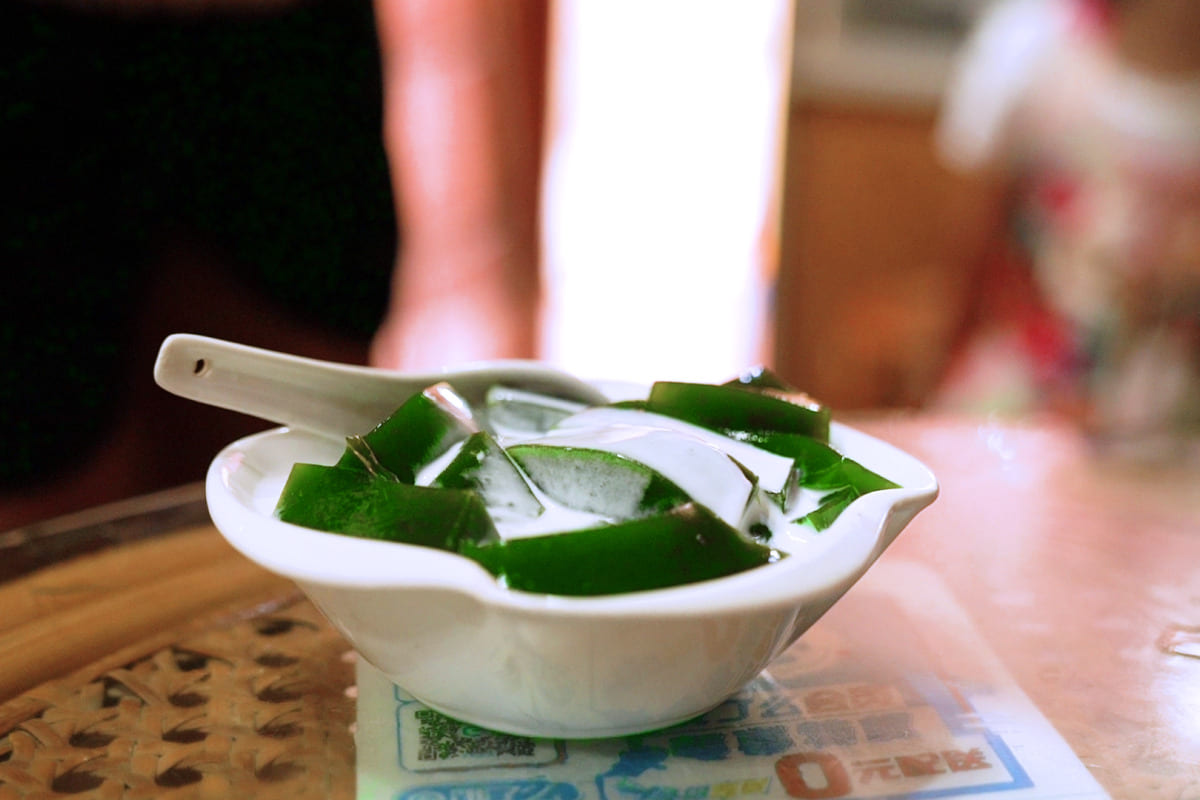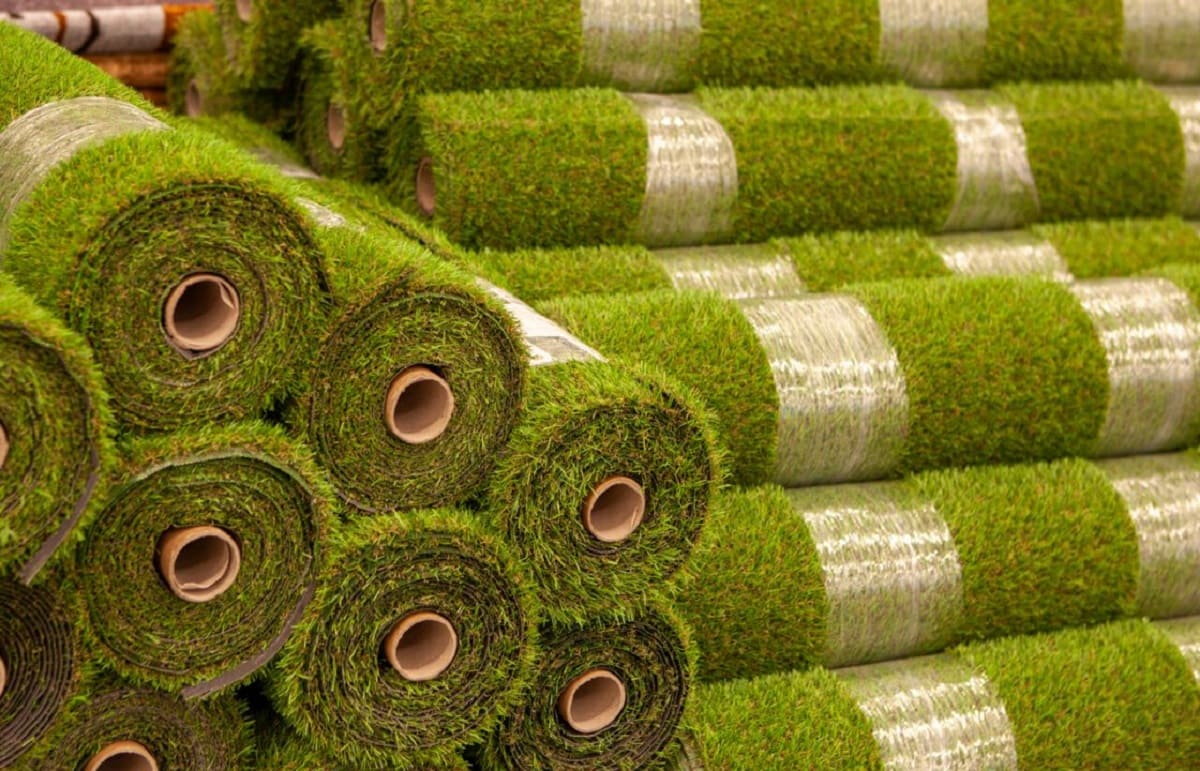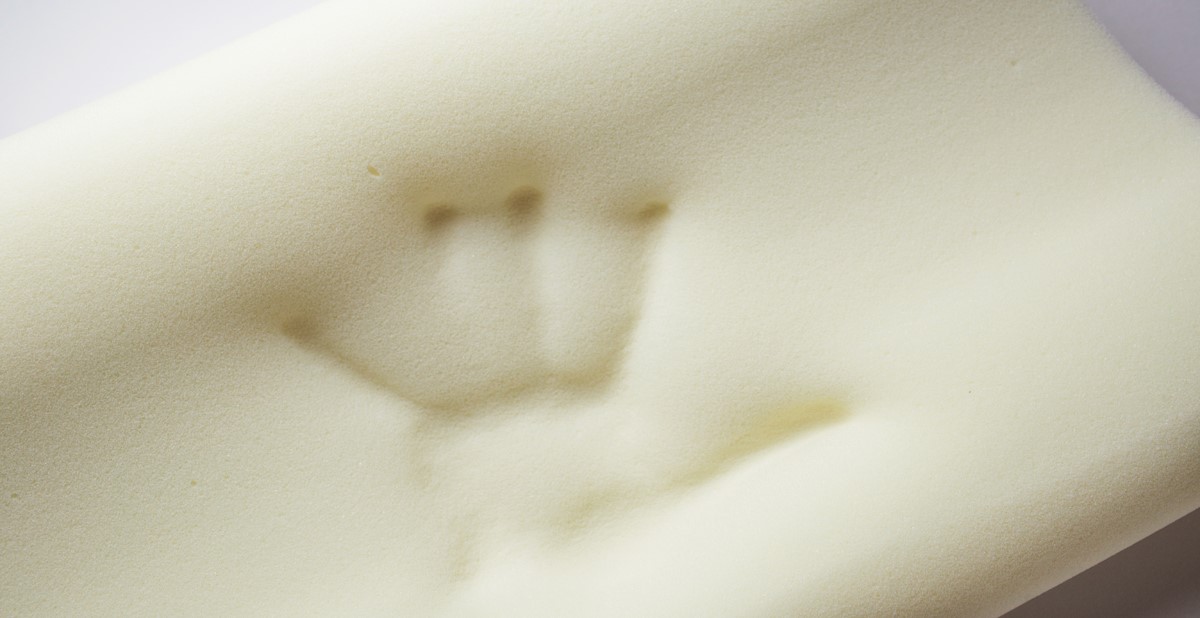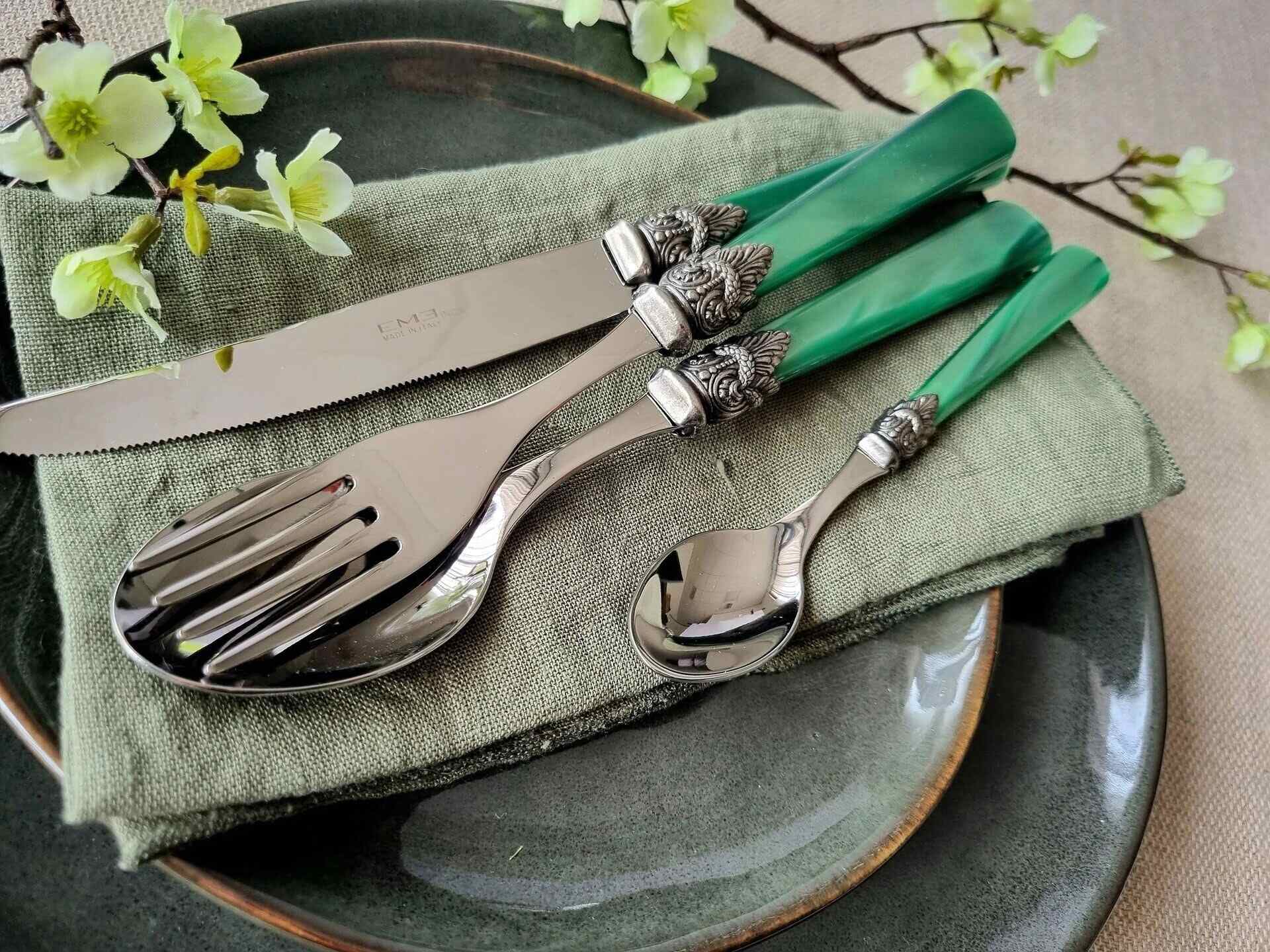Home>Gardening & Outdoor>Landscaping Ideas>What Is Grass Jelly Made From


Landscaping Ideas
What Is Grass Jelly Made From
Published: January 30, 2024
Discover the ingredients used to make grass jelly and get inspired with landscaping ideas to incorporate this unique ingredient into your garden design. Explore the versatility of grass jelly in landscaping.
(Many of the links in this article redirect to a specific reviewed product. Your purchase of these products through affiliate links helps to generate commission for Storables.com, at no extra cost. Learn more)
Introduction
Welcome to the fascinating world of grass jelly, a unique and refreshing ingredient that has been enjoyed for centuries in various Asian countries. This article aims to explore the origins, composition, and culinary uses of this intriguing jelly, shedding light on its cultural significance and nutritional benefits.
As we delve into the depths of this topic, you’ll gain a deeper understanding of what grass jelly is, the ingredients used in its preparation, the traditional methods of making it, and its potential health advantages. Whether you’re a culinary enthusiast seeking to expand your knowledge or simply curious about unfamiliar delicacies, this exploration of grass jelly is sure to pique your interest and leave you with a newfound appreciation for this distinctive treat.
Key Takeaways:
- Grass jelly is a unique dessert from Asia, made from the leaves of the mesona chinensis plant. It has a slightly bitter taste and is used in a variety of sweet and savory dishes.
- Grass jelly has a rich history, starting as a medicinal ingredient in ancient China and evolving into a beloved culinary tradition across Asia. It offers potential health benefits and can be enjoyed in desserts, beverages, and even savory dishes.
Read more: What Is Grass Jelly Good For
What Is Grass Jelly?
Grass jelly, also known as leaf jelly or xiancao, is a type of jelly-like dessert or ingredient that originates from Southeast Asia, particularly in countries such as China, Taiwan, Vietnam, and Indonesia. It is made from the leaves of the mesona chinensis plant, which is a member of the mint family. The leaves are processed to create a dark, translucent jelly with a slightly bitter taste and a delicate herbal aroma.
Grass jelly is often described as having a subtle, earthy flavor, making it a versatile addition to both sweet and savory dishes. Its unique texture and cooling properties have made it a popular choice for desserts and beverages, especially during the hot summer months. In addition to its culinary uses, grass jelly is also valued for its potential health benefits, as it is believed to possess cooling properties and is often used in traditional Chinese medicine to alleviate heat-related ailments.
While grass jelly is commonly enjoyed in its solid form, it is also available in a canned or pre-packaged liquid format, making it convenient for use in a wide range of recipes. Whether consumed on its own, paired with fruits and syrups, or incorporated into drinks and desserts, grass jelly offers a distinctive taste and texture that sets it apart from other gelatin-based treats.
History of Grass Jelly
The history of grass jelly can be traced back to ancient China, where it was initially cultivated for its medicinal properties. The mesona chinensis plant, from which grass jelly is derived, has been used in traditional Chinese medicine for centuries due to its purported cooling and detoxifying effects on the body. Over time, the consumption of grass jelly evolved from a medicinal practice to a culinary tradition, with the jelly becoming a popular ingredient in various sweet and savory dishes.
Grass jelly’s cultural significance extends beyond China, as it has also been embraced in other Asian countries with diverse culinary traditions. In Taiwan, grass jelly is a beloved component of desserts and beverages, often combined with fruits, syrups, and other toppings to create refreshing and visually appealing treats. Similarly, in Vietnam and Indonesia, grass jelly is a staple ingredient in a wide array of traditional dishes, ranging from sweet soups to iced drinks.
Throughout its history, grass jelly has been celebrated for its versatility and adaptability, as it can be incorporated into both hot and cold dishes, offering a cooling contrast to spicy or rich flavors. Its enduring popularity is a testament to its cultural significance and enduring appeal across different regions and generations.
Ingredients Used in Making Grass Jelly
The process of making grass jelly involves a few simple yet essential ingredients, each contributing to the distinct characteristics of this unique delicacy. The primary ingredient is the leaves of the mesona chinensis plant, which are harvested and processed to extract the natural components that form the basis of the jelly. These leaves contain polysaccharides, flavonoids, and other bioactive compounds that contribute to the jelly’s texture and potential health benefits.
In addition to the mesona chinensis leaves, water is a crucial component in the production of grass jelly. The leaves are typically boiled or steeped in water to extract their soluble components, resulting in a dark, translucent liquid that serves as the foundation for the jelly. Depending on the desired consistency and taste, sugar or other sweeteners may be added to the mixture to balance the natural bitterness of the leaves and enhance the overall flavor of the jelly.
Some variations of grass jelly may incorporate additional ingredients, such as agar-agar or other gelling agents, to modify the texture and stability of the final product. However, traditional recipes often rely solely on the natural properties of the mesona chinensis leaves and water, allowing the jelly to retain its authentic taste and appearance.
It is important to note that the quality and freshness of the mesona chinensis leaves play a significant role in determining the flavor and texture of the grass jelly. Cultivation and harvesting practices, as well as the specific variety of the plant, can influence the overall quality of the final product. As a result, attention to detail and expertise in processing the leaves are essential for producing high-quality grass jelly that captures the essence of this time-honored delicacy.
Grass jelly is made from the leaves and stalks of the Mesona chinensis plant, which is a type of mint. The leaves are boiled and then the liquid is set to form a jelly.
How Is Grass Jelly Made?
The process of making grass jelly involves several steps that transform the leaves of the mesona chinensis plant into the distinctive jelly-like substance that is cherished in various culinary traditions. The journey from raw leaves to the final product requires meticulous preparation and adherence to time-honored techniques.
First, the mesona chinensis leaves are harvested and thoroughly cleaned to remove any impurities or debris. Once cleaned, the leaves are then boiled or steeped in water to extract their soluble components, resulting in a dark, herbal-infused liquid. This liquid is then strained to remove any solid particles, leaving behind a smooth, dark extract that forms the base of the jelly.
Next, the extracted liquid is combined with a sweetening agent, typically sugar, to balance the natural bitterness of the leaves and enhance the overall flavor of the jelly. The mixture is then heated and simmered to dissolve the sugar completely, resulting in a sweetened herbal liquid that serves as the foundation for the jelly.
Once the sweetened liquid is prepared, a gelling agent, such as agar-agar, may be added to facilitate the formation of the jelly. The mixture is then poured into molds or containers and left to cool and solidify, allowing the jelly to take shape. The cooling process is crucial, as it determines the texture and consistency of the final product, ensuring that the jelly sets into a smooth, translucent form with a delicate, slightly chewy texture.
After the jelly has solidified, it is typically cut into cubes or other desired shapes, ready to be enjoyed on its own or incorporated into a wide range of dishes and beverages. Whether served in a bowl with syrup and toppings, mixed into drinks, or used as a component in desserts, the process of making grass jelly culminates in a versatile and visually striking delicacy that captivates the senses and delights the palate.
Read more: What Is Grass Jelly Boba
Nutritional Value of Grass Jelly
Grass jelly offers a unique combination of nutritional benefits, making it a noteworthy addition to a balanced diet. While it is primarily valued for its refreshing taste and cooling properties, it also contains essential nutrients and bioactive compounds that contribute to its potential health advantages.
One of the key components of grass jelly is its high water content, which makes it a hydrating and thirst-quenching option, particularly in warm climates. Additionally, the mesona chinensis leaves from which grass jelly is derived contain a variety of bioactive compounds, including polysaccharides and flavonoids, which are believed to possess antioxidant properties. These compounds may help combat oxidative stress and support overall well-being.
Grass jelly is also low in calories and fat, making it a suitable choice for individuals seeking lighter dessert options. Its natural bitterness and subtle sweetness make it an ideal ingredient for those looking to reduce their consumption of highly processed and excessively sweetened treats, offering a more balanced and nuanced flavor profile.
Furthermore, grass jelly is often enjoyed with additional ingredients, such as fruits, syrups, and herbal infusions, which can contribute to its overall nutritional value. By incorporating fresh fruits and natural sweeteners, grass jelly-based desserts and beverages can provide essential vitamins, minerals, and dietary fiber, enhancing their nutritional content and adding a burst of flavor and texture.
It is important to note that while grass jelly offers certain nutritional benefits, its consumption should be part of a varied and balanced diet. As with any food or beverage, moderation is key, and individuals with specific dietary considerations or health conditions should consult with a healthcare professional to ensure that grass jelly aligns with their nutritional needs and overall wellness goals.
Culinary Uses of Grass Jelly
Grass jelly’s versatility and unique flavor profile make it a prized ingredient in a wide range of culinary creations, spanning both sweet and savory applications. Its cooling properties and slightly bitter undertones add depth and contrast to various dishes and beverages, making it a beloved component in diverse culinary traditions across Asia.
One of the most popular ways to enjoy grass jelly is in the form of desserts and sweet treats. In Taiwan, grass jelly is often served with a generous drizzle of syrup, alongside fresh fruits such as mango, lychee, and pineapple, creating a visually stunning and refreshing dessert known as grass jelly fruit cocktail. This delightful concoction offers a harmonious blend of textures and flavors, with the jelly’s smooth, translucent cubes providing a cooling contrast to the vibrant sweetness of the fruits and syrup.
Grass jelly is also a favored ingredient in traditional Asian beverages, particularly during the scorching summer months. It is commonly incorporated into iced drinks, such as grass jelly milk tea or grass jelly with herbal infusions, offering a cooling and rejuvenating beverage option. The jelly’s subtle herbal notes and chewy texture add a distinctive touch to these beverages, enhancing their visual appeal and providing a delightful textural element.
Additionally, grass jelly can be utilized in savory dishes, where its cooling properties and slightly bitter flavor serve as a counterbalance to rich or spicy flavors. In Vietnamese cuisine, for example, grass jelly is a key component in che, a sweet soup featuring a medley of ingredients such as coconut milk, beans, and other jellies, creating a complex and satisfying dessert that showcases the jelly’s adaptability in both sweet and savory contexts.
Furthermore, grass jelly can be creatively incorporated into modern culinary creations, such as fusion desserts, where it adds a touch of sophistication and novelty. Its translucent appearance and delicate texture make it an appealing ingredient for chefs and home cooks seeking to elevate their dessert presentations and offer a memorable dining experience.
Whether enjoyed in traditional recipes or innovative culinary experiments, grass jelly continues to captivate food enthusiasts with its versatility and distinctive characteristics, cementing its status as a beloved and enduring culinary treasure.
Conclusion
Exploring the world of grass jelly unveils a rich tapestry of cultural heritage, culinary creativity, and potential health benefits. This unique ingredient, derived from the mesona chinensis plant, has captivated the palates of individuals across Asia for centuries, offering a refreshing and versatile addition to a wide array of dishes and beverages.
The history of grass jelly is steeped in tradition and folklore, with its origins rooted in ancient Chinese medicine and evolving into a cherished culinary staple in various Asian countries. Its cooling properties and slightly bitter flavor have made it a sought-after ingredient in desserts, beverages, and savory dishes, showcasing its adaptability and enduring appeal in diverse culinary landscapes.
From the meticulous process of harvesting and processing mesona chinensis leaves to the artful preparation of grass jelly-based delicacies, this ingredient embodies a harmonious blend of tradition and innovation. Its nutritional value, including its hydrating properties and potential antioxidant content, further enhances its allure as a distinctive and health-conscious choice for culinary enthusiasts.
As we conclude our exploration of grass jelly, it becomes evident that this humble delicacy holds a special place in the hearts of those who appreciate its nuanced flavors, cooling properties, and cultural significance. Whether enjoyed in a classic fruit cocktail, a modern fusion dessert, or a traditional sweet soup, grass jelly continues to inspire creativity and delight the senses, inviting individuals to savor its timeless appeal and embrace its role in shaping diverse culinary traditions.
Ultimately, the journey through the world of grass jelly serves as a testament to the enduring power of food to bridge cultural divides, evoke cherished memories, and spark joy through shared culinary experiences. As we partake in the pleasures of discovering and savoring unique ingredients like grass jelly, we honor the traditions and innovations that have shaped our culinary landscape, celebrating the diverse flavors and stories that enrich our lives.
Frequently Asked Questions about What Is Grass Jelly Made From
Was this page helpful?
At Storables.com, we guarantee accurate and reliable information. Our content, validated by Expert Board Contributors, is crafted following stringent Editorial Policies. We're committed to providing you with well-researched, expert-backed insights for all your informational needs.















0 thoughts on “What Is Grass Jelly Made From”